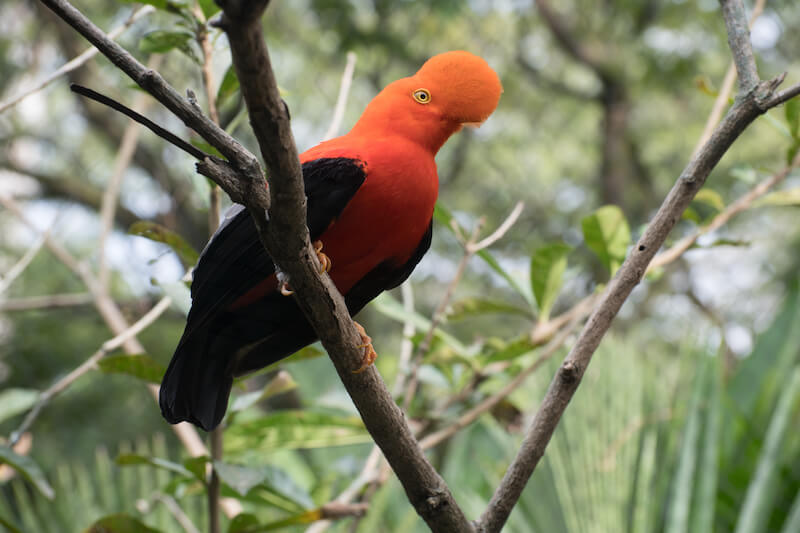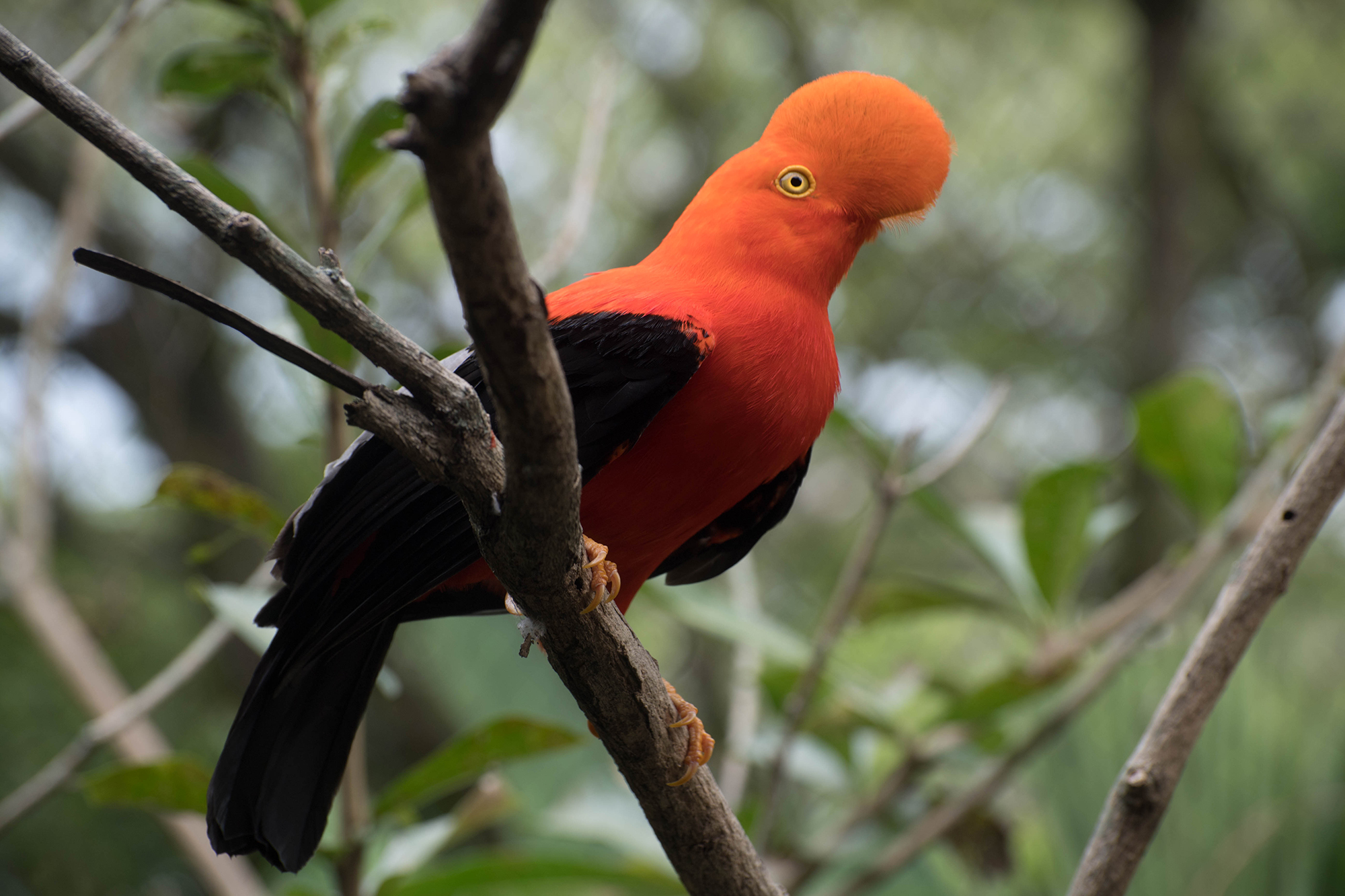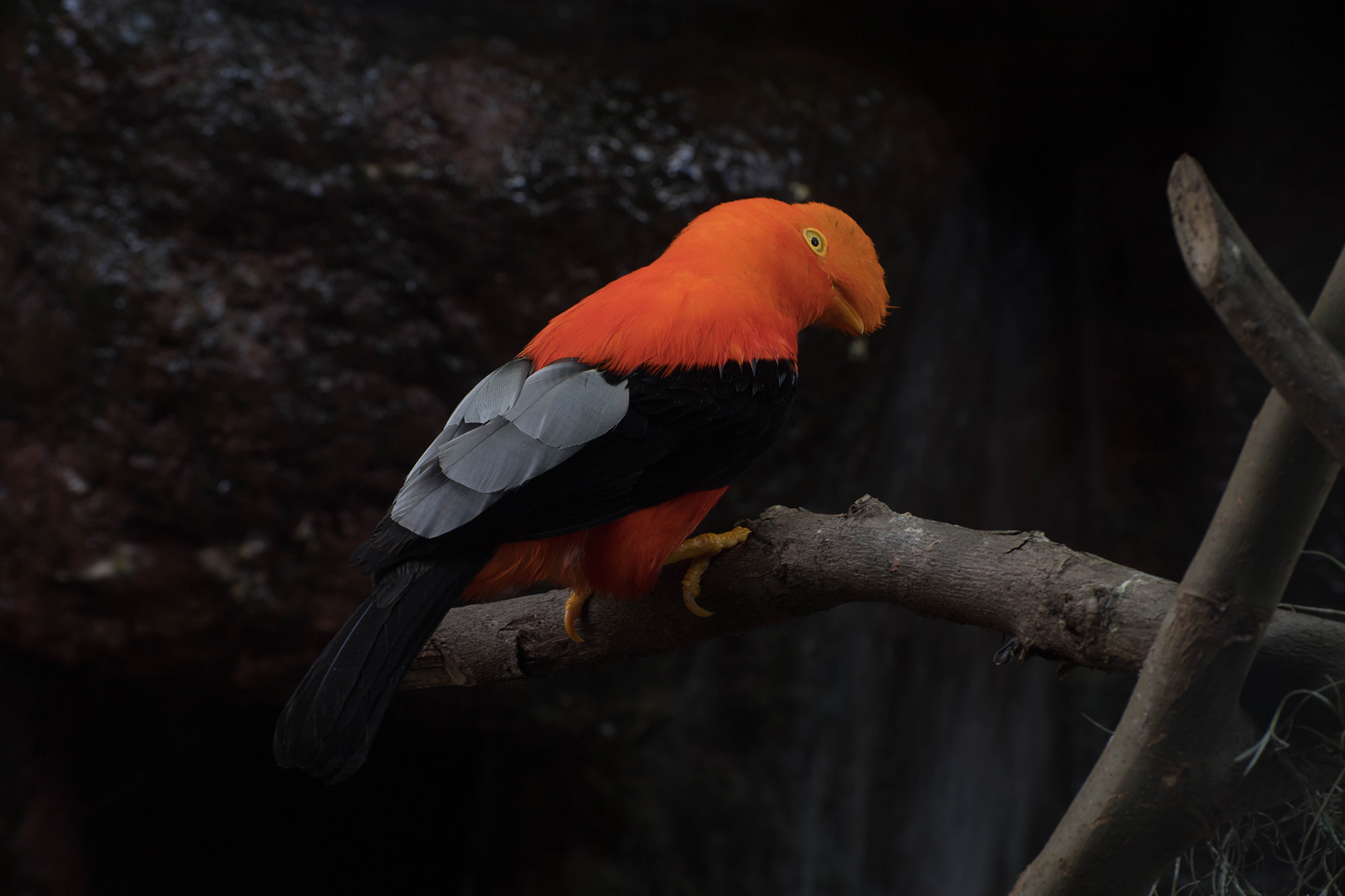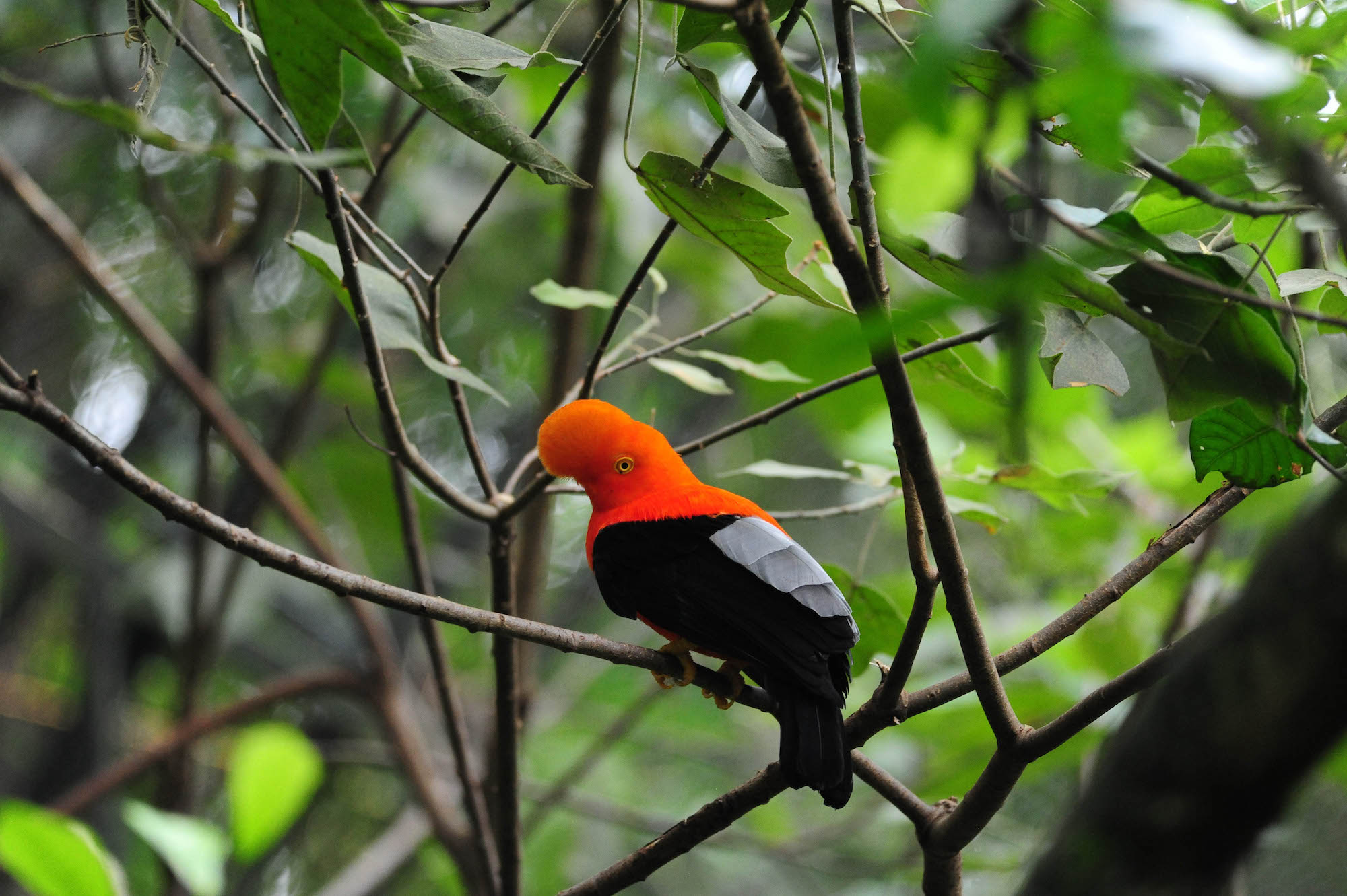Andean Cock-of-the-Rock is a neotropical bird FOUND IN the Andes
GAllito de ROCA ANDINO es un ave neotropical DE los andes
Rupicola peruvianus
The Andean Cock-of-the-Rock (Rupicola peruvianus) is a neotropical bird distributed all across the cloud forest of the Andes. Large passerine of about 32 cm (13 in) long and a weight of 265 g (0.6 lb). It is generally shy and inconspicuous This bird exhibits marked sexual dimorphism very evident in plumage color. The male has a large disk-like crest and brilliant scarlet or orange plumage. It has black tail and wings, and pale greyish scapulars. The female is much darker and browner than the male and has a less prominent crest. The bill is yellowish in the male, and dark with a small yellow tip in the female. They produce squawking and grunting calls sometimes similar to the sound of a pig. This bird eats a diet of fruit, supplemented by insects, amphibians, reptiles, frogs, and smaller mice. Faithful to one partner. The male devotes elaborate display rituals early in the morning or late afternoon to show off its magnificent plumage to the female during mating. When a group of males gathers, competitors perch in pairs or small groups to perform mock confrontational displays, which feature bowing, wing-flapping, head-bobbing, bill-snapping, and bizarre squeaking and grunting calls. They redouble their display efforts when the females approach to assess their performance. Male cocks-of-the-rock are polygamous, and have nothing to do with nesting once mating is done. Female makes the nest in rocky and dark places in forest ravines using her saliva mixed with mud and plant material. Female incubates the eggs and stay with the young for 3 months.
Gallito de Roca Andino es una de las aves icónicas de los Andes que se habita en lugares rocosos entre los 500 a 2400 m (1600 - 7900 ft) de altura en bosques húmedos con neblina y clima tropical. Su tamaño oscila entre los 32 a 35 cm (13-15 in) de altura. Se diferencian por su profundo dimorfismo sexual en color. El macho combina colores negro y naranja intenso o carmesí en su plumaje. Las alas y cola son negras con algunas plumas de color gris perla en las alas. Los ojos pueden ser de tonos anaranjados a amarillo azulosos. Patas anaranjadas. El macho tiene cresta emplumada erecta e hinchada con forma de disco. La cresta cubre casi todo el pico. Mientras que la hembra tiene tonos no llamativos de color marrón y una cresta de menor tamaño que el macho. De ojos con iris de color rojizo a café. Se mimetiza con los ardedores rocosos se protégé contra los depredadores naturales. Los machos chillan como cerdos, saltan y bailan frente a sus hembras. Poseen pico corto amarilloso. Se alimentan principalmente de frutas silvestres y alimentan sus polluelos con una variedad de insectos. Fieles a una sola pareja. La hembra construye su nido con saliva, barro y materiales vegetales en sitios oscuros en rocas grandes cerca al agua. El tiempo de incubación es de 28-30 días y los polluelos permanecen con la hembra durante 3 meses. Su vuelo es fuerte y veloz.

LAM_0059

LAM_0071

LAM_0150

LAM_0154

LAM_0166

LAM_0150

LAM_0183

LAM_0179

LAM_0183




